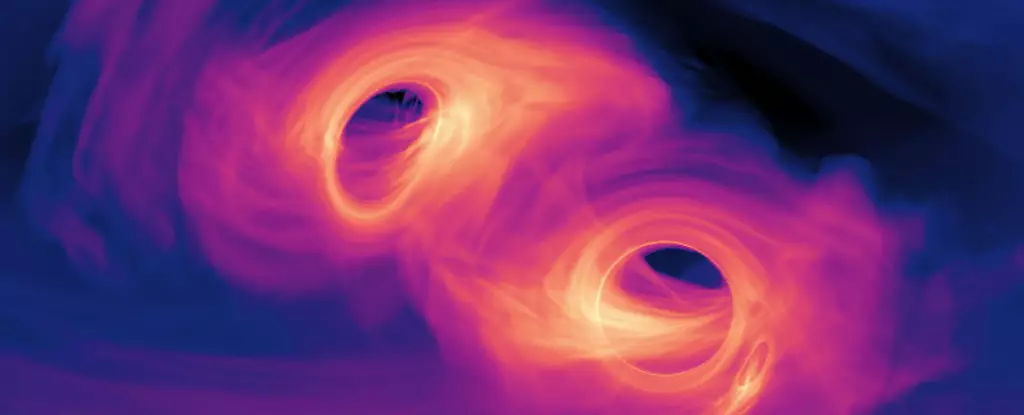The concept of Hawking Radiation, proposed by Stephen Hawking in the 1970s, suggests that black holes can eventually evaporate over long periods of time. Despite the theoretical basis for this phenomenon, actual observation of Hawking Radiation has remained a challenge.
Recent research by a group of European scientists introduces a novel method for detecting Hawking Radiation. By focusing on black hole mergers, these researchers propose that the formation of small “morsel” black holes during such events could provide a window into observing Hawking Radiation.
When black holes merge, they may generate morsel black holes, comparable in size to asteroids, which are then expelled into space. These small black holes could emit gamma rays with a distinct energy signature, making them potentially detectable.
The study suggests that the evaporation of black hole morsels results in the emission of particles in a symmetrical pattern. If the larger merged black hole does not obstruct the view, these Hawking Radiation particles could reach observers on Earth, producing gamma-ray bursts at energy levels exceeding the trillion-electron volt scale.
While atmospheric Cherenkov telescopes like the HAWC observatory may be capable of detecting the energy emitted by morsel black holes, several factors could complicate the observation process. The intense gravitational environment of black hole mergers and the relativistic velocities at which morsels are emitted may alter the spectra of the emitted radiation, posing challenges for accurate detection.
The study also raises questions about the potential impact of observing Hawking Radiation from morsel black holes on our understanding of particle physics. The authors suggest that the detection of such phenomena could provide insights into new physics concepts beyond the scope of current collider experiments, including supersymmetry, composite dynamics, and extra dimensions.
Moreover, the researchers speculate that asteroid-sized morsel black holes could have originated in the early Universe under different physical conditions. If these black holes have persisted until the present day without evaporating, they could potentially constitute a fraction of dark matter, further underscoring the importance of studying Hawking Radiation.
The exploration of Hawking Radiation through the detection of black hole morsels presents a promising avenue for unraveling longstanding mysteries in astrophysics and particle physics. By leveraging observations of gamma-ray bursts and analyzing the spectral signatures of emitted radiation, scientists may uncover new insights into the nature of black holes, the early Universe, and fundamental particles. Further research and technological advancements in observational instruments will be crucial in advancing our understanding of Hawking Radiation and its implications for the broader landscape of theoretical physics.



Leave a Reply